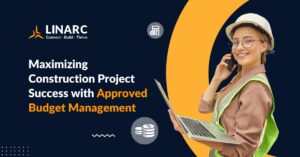Planning a Budget and Construction Cost Estimating

One essential part of the preconstruction phase is Construction Cost Estimating. The budget dictates everything from what features will be included in the final design, what quality of materials will be used, and who the company can afford to hire. Establishing a realistic budget is both a one time event, and an ongoing process. Plans, timelines, and cost adjustments, need to be continually evaluated so the owner can be informed of any variations as the project progresses.
The first pass at establishing a budget should be when the architect has begun the Schematic Design (SD). Once you have a general high level overview of what the project cost is likely to be, this information needs to be presented to the owners. In doing so, you can find out early if the budget’s too high and whether adjustments need to be made. It’s not uncommon for owners to have lofty ideas of grandeur that don’t match with the financial realities of their funds and investors. The sooner reality can be brought in line with their ideals, the project can begin to take on a clear direction. Having this process start during the schematic design means the owner won’t end up paying for designs that aren’t feasible for them to financially back.
This first pass requires specialized expertise, as it needs to be made based on partial information. A professional estimator or even a general contractor are two leading professionals to call upon to assist. They can interview the designers and architects to fill in the blanks that aren’t detailed yet in the designs. Based upon their vast repository of expertise, they can then make informed estimates of what the actual price is likely to be. This will take into account a number of considerations that aren’t on the page, such as rising labor and materials costs, and realistic anticipations of cost overruns.
Once the drawings and plans are finalized, the process of establishing the budget is at its core, quite simple. First define the scope of the project and turn it into manageable sections of work using the Work Breakdown Structure (WBS). Then send each scope for each subtask to relevant contractors and request their bid for the work. Once you get their proposals, add them up, and there’s your budget. At least, there’s your baseline budget based on the full plans.
Specific items that need to be included and evaluated continually as the project evolves are:
- Integrity and reliability of contractors. Contractors may have a tendency to bid low in order to win a project. But then they may underdeliver and you’ll be unsatisfied with the work. Working with contractors that you have relationships with is always preferred as you know each other’s work styles and have an established rapport with them.
- Review licensing and permitting costs to ensure you plan for their approval timeline and any fees. It may be more interesting to focus mainly on the construction project being built, but ensuring you address all the legal requirements proactively will prevent any unexpected delays downline.
- Allocate some budget for contingency and cost escalations. Experienced estimators with local knowledge will be best at this as they can make a best guess as to where things may run off course. Some types of work are inherently more complex than others and are common to go beyond initial estimates.
- Make sure all consultants, advisors, and specialists costs are included in the overall budget estimate. It’s estimated that these may comprise as much as 30% of the overall budget.
- Equipment and rental fees for vehicles and other construction specialty related equipment. Make a complete list of all the equipment that will be needed to complete the Scope of Work. For large equipment this includes transport, maintenance, setup, and breakdown.
- All construction materials which may include lumber, concrete, steel, aggregate, scaffolding, drywall, and a wide variety of industrial materials. This is an area where Linarc’s construction management software gives construction teams a distinct advantage. You can group your entire materials cost across the entire project, or even multiple projects. Thus you can gain access to volume discounts from suppliers by buying in bulk.
- Inflation and cost increases. For long term projects costs of all goods and services will continue to increase. This is especially important to present to owners who have longer planning processes before they break ground. One example is where a church has a protracted fundraising period that will last months or years before the project will begin. If goods and services increase 5-6% a year, then that’s a sizable overage for simply waiting a year before starting the project. Budgets should reflect a realistic project start date, and also an increasing price rate over time. This is especially true for multi-year projects.
Diligent and consistent vetting is important in defining the construction budget. Starting from the beginnings of the schematic drawing, the budget is often evaluated and revised right up through project close. Each phase and contract in the project will need its own evaluation, and many of those may change as construction progresses. Each contractor needs to be evaluated as to whether they can deliver the project on time and on budget. By keeping a constant watch on funds, scope, work delivered, and inspections, construction projects will run much more smoothly.
Construction management software like Linarc greatly assists with construction budget management. By keeping all tasks within the same system, project overseers can pinpoint exactly where tasks are running smoothly, and where overruns are coming from. Making the budget is clear to all that need to know it and makes it easy for project managers to oversee and adapt to ensure successful completion of the project.




